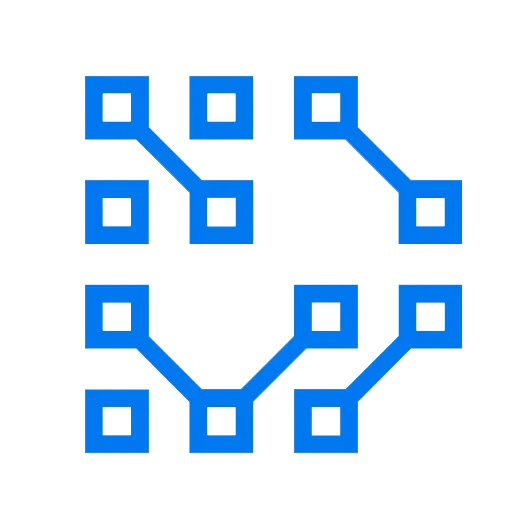Blog

7 Steps to Replace Busywork With SaaS Automation
Want to stop drowning in repetitive daily tasks and elevate your business to the next level? In this post, you'll discover exactly how small businesses are using affordable SaaS automation to free up valuable time, acquire more clients, and boost revenue—without having a huge tech team or immense budgets.
Why does this matter? According to Gartner, 80% of executives think automation can be applied to any business decision, and McKinsey reports that companies that rapidly adopt automation see a 20–25% productivity boost and 40% faster lead response. For a med spa or local service business, that can mean more positive reviews, steady client flow, and staff who finally have time to focus on *what matters*.
Unfortunately, very few small businesses ever experience these gains. The truth is...
The Real Reason Small Businesses Struggle With Tech
Most owners and managers are overwhelmed by the technical complexity and endless options. They try to do it all manually or ask overworked staff to moonlight as marketers, IT techs, and ops managers.
Lack of Time: Owners and teams are busy running their core business and can't stop to research new tech or build complex automations.
Budget Limits: The cost of hiring agencies or growing an in-house tech team simply isn't feasible for most small businesses.
Rapidly Changing Tools: It's hard to keep up with which platforms actually generate ROI and which are just shiny objects.
Fear of Disruption: Deploying new systems feels risky—what if it breaks what’s already “working enough”?
Talent Gap: There’s a strong myth that only tech-savvy teams can deploy automation or AI-driven workflows.
Here’s the good news: you don’t need an army of tech experts or a huge budget. With the right SaaS solution and a step-by-step plan, you can automate busywork, attract new clients, and delight existing ones—fast.
Here's how, step by step:
Step 1: Pinpoint Your Most Time-Consuming Repetitive Tasks
The first step is vital: Identify which daily operations eat up most of your—or your staff’s—time.
For med spas and service businesses, this could be managing appointment reminders, following up on no-shows, collecting reviews, or responding to new client inquiries. For example, one med spa found their team spent 7+ hours/week manually confirming appointments and chasing reviews. Once identified, these areas are prime for automation.
Step 2: Audit Your Current Tech Stack (And Gaps)
Many businesses make the mistake of adding more tools to an already bloated tech stack without reviewing what’s already in place.
Take inventory: List out every tool used (scheduling, CRM, email, SMS, review collection). Identify overlaps, gaps, or unused features. For instance, some clinics discovered they paid for 4 different platforms that barely spoke to each other, while critical steps—like automated reminders—were missing. Avoid this by getting clear on what you have before adding new SaaS solutions.
Step 3: Define Clear Automation Goals With Measurable KPIs
Real transformation happens when you align automation to business priorities—not just convenience.
Set specific, quantifiable goals. Examples: "Reduce manual scheduling time by 80%," "Increase review requests sent by 3x," or "Respond to all website leads within 5 minutes, 24/7." When a med spa did this, they boosted their 5-star reviews by 70% within 60 days because automations made it easy for clients to respond right after their visit.
Step 4: Choose a Unified SaaS Automation Platform
Where most businesses fail is by piecemealing solutions instead of picking a centralized SaaS tool that can do it all—or nearly all.
Look for platforms built for your industry (like an all-in-one med spa automation tool) that integrate scheduling, reminders, reviews, and follow-ups. This reduces technical complexity, saves costs, and improves visibility into your results. According to IDC, companies that consolidated onto a single automation software saw IT costs drop by up to 35%.
Step 5: Map & Automate Your Client Communication Journey
Now, connect the dots: use your SaaS platform to automate every major communication touchpoint.
Set up automated appointment confirmations (SMS and/or email), follow-ups for missed appointments, and review requests post-visit. One clinic saw "no-show" rates drop by 40% just by automating friendly reminder texts and emails. Consistency here delivers a dramatic boost in client experience.
Step 6: Collect and Act On Automated Insights
Here’s where things start coming together: Your SaaS should provide data dashboards showing what’s working (and what isn’t).
Review metrics weekly: how many leads responded after automation? What’s your average review score? How long did it take for a new lead to get a response? Acting on these data points helps maximize ROI and continuously refine your workflows.
Step 7: Train Your Team to Leverage Automation—Not Compete With It
The finish line: Empower your staff to use these tools as force multipliers, not threats.
When roles shift from “doing the grunt work” to “coordinating high-value client touchpoints,” staff become partners in growth. Schedule a quick training on the new system. Highlight how their newly freed-up hours can go into delivering better consultations or creative marketing initiatives. In today’s landscape, teams that embrace automation consistently outperform those that resist.
Conclusion: SaaS Automation is the “Secret Weapon” for Growth
The core idea: Instead of relying on ever more hours and talent to keep up with competitors, success going forward is about working smarter by automating where it matters most. For small businesses, every hour saved and every client touchpoint optimized compounds into real growth.
Start by auditing your busywork, clarify your goals, and select a unified SaaS platform that fits your needs. Implement automations step by step and engage your team as collaborators in the process.
Ready to get started? Block off one hour this week to analyze your current workflows. Identify just one task to automate—whether it’s appointment reminders or review requests—and pilot a SaaS tool that makes it effortless. The gains will compound, and soon you’ll have a lean, modern, and more profitable business. Want expert help? Reach out or comment below to learn what affordable automations are already custom-built for your industry.
Stay in touch
Sign Up For Our Business Growth Newsletter

